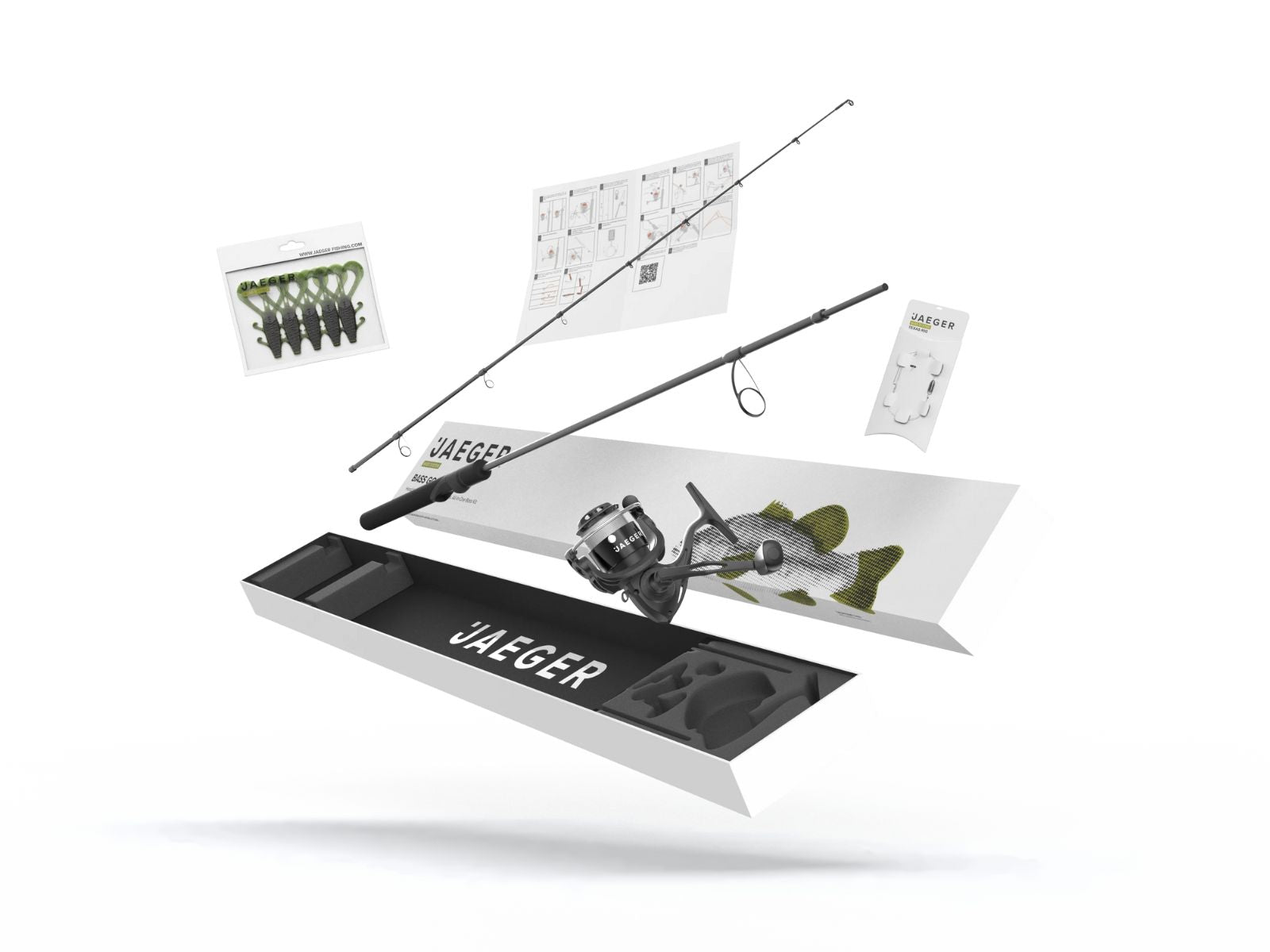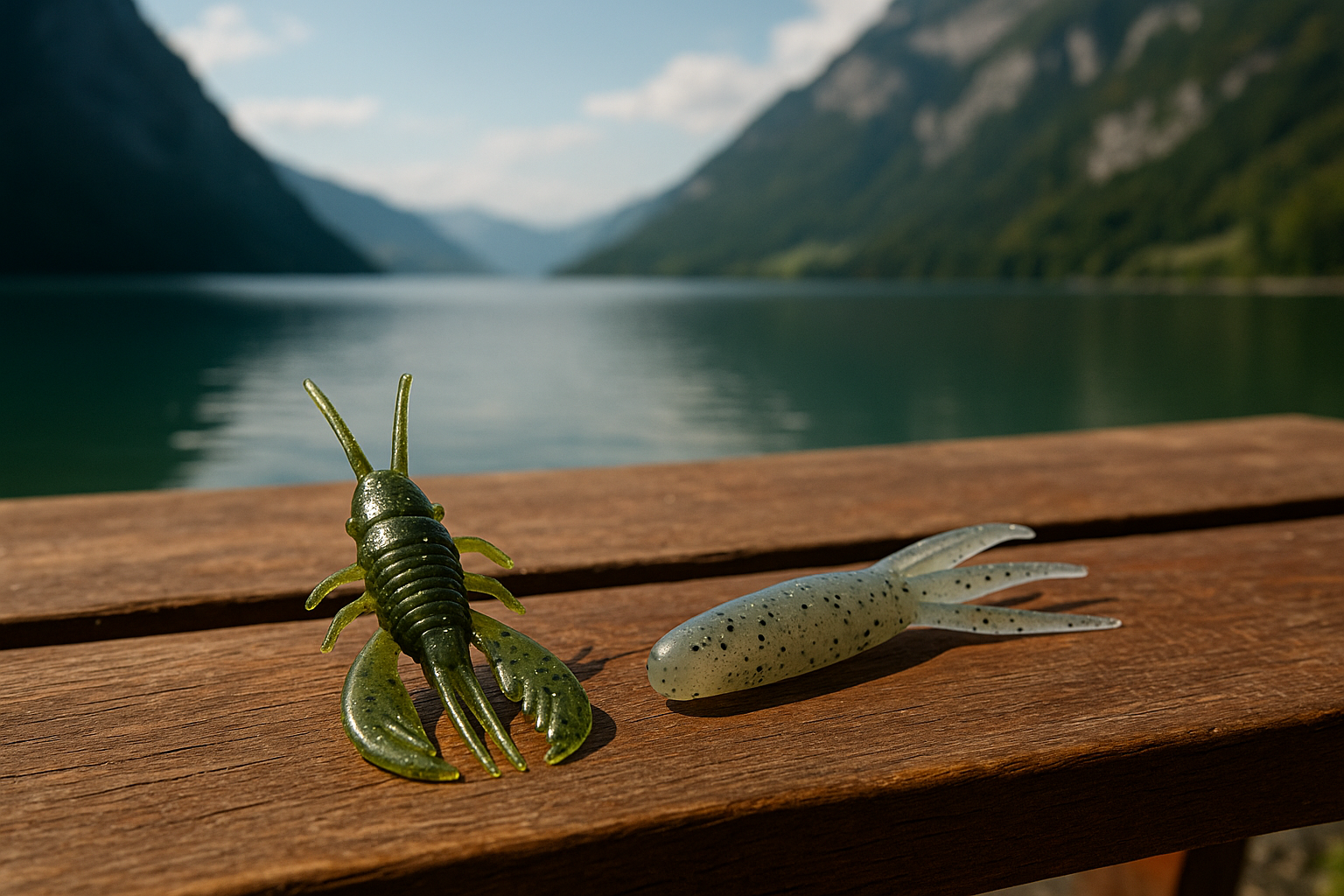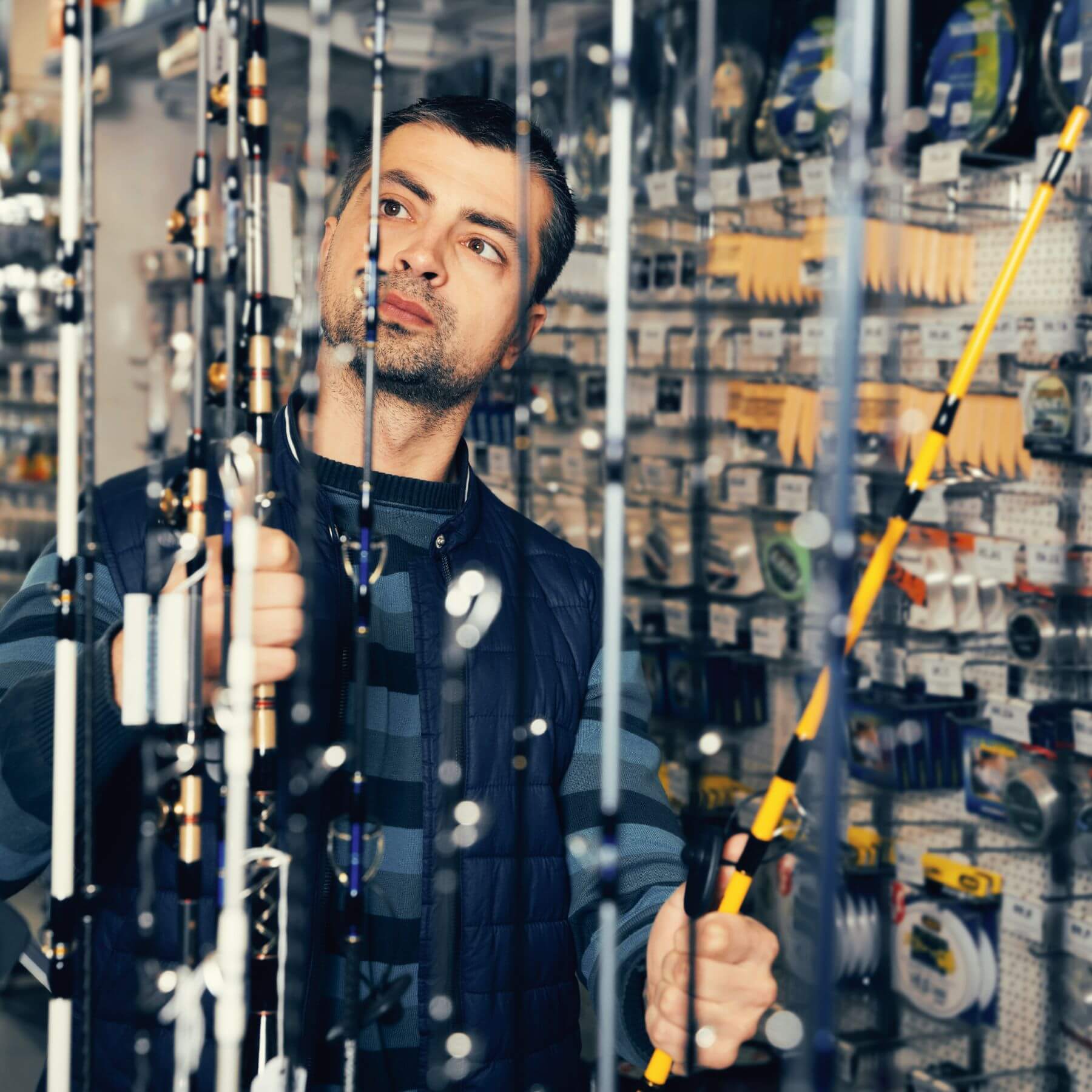
Fishing Gear Maintenance: Keep Your Combos in Top Shape
It was the kind of fight every angler dreams about – drag screaming, rod bent to the handle, the fish of a lifetime on the other end. And then… nothing. The line snapped clean. Not because the bass was too big, but because the reel hadn’t seen oil in months and the line had been frayed from saltwater trips.
Moments like this are 100% preventable. With the right maintenance routine, your gear stays smooth, reliable, and ready when it matters most. In this guide, you’ll learn exactly how to keep your rods, reels, line, and tackle in top shape, so you never lose your PB to rust, wear, or neglect.
Fishing Gear Maintenance: Keep Your Combos in Top Shape – Everything at a Glance
- • Why fishing gear maintenance saves fish, money, and frustration
- • After-trip cleaning tips for rods, reels, lures & tackle boxes
- • Monthly deep-clean checklist to keep your gear performing
- • How to care for fishing line, hooks, and soft/hard lures
- • When to replace worn-out gear – and the best JAEGER upgrades
Why Gear Maintenance Matters
Would you take a Ferrari off-road without cleaning it after? Probably not. Your fishing gear deserves the same respect. Neglecting maintenance might not seem like a big deal after one or two trips, but over time, dirt, salt, and moisture eat away at your equipment.
Rust on hooks, corrosion in reel bearings, or tiny cracks in rod guides can all cost you fish and sometimes the one you’ve been chasing for years. Proper care isn’t just about avoiding failure in the heat of a fight. It’s about:
-
Preventing rust and damage before it even starts.
-
Avoiding breakage that can ruin a trip and require costly repairs.
-
Saving money long-term by extending the life of your gear instead of replacing it every season.
-
Building confidence every time you cast, knowing your setup will perform when it matters.
The Basics – What to Clean & When
A reliable fishing gear maintenance routine is more about consistency than complexity. Do the light stuff after every trip so salt, sand, and grit never get a foothold. Then, once a month, do a deeper pass to keep reels smooth, rods tight, hooks sharp, and your tackle box rust‑free. Follow this cadence and you’ll clean fishing gear in minutes—not hours—while your fishing combos stay ready for work.
After Every Trip
Rinse smart (freshwater).
-
After saltwater, always give rods, reels, lures, and nets a light freshwater mist. After freshwater trips, a quick wipe usually genügt.
-
Keep the reel’s drag tight while rinsing (so water doesn’t push into the stack), then back it off for storage.
-
Pat dry with a microfiber cloth; let everything air‑dry fully before it goes back in the box.
Rods (blank, guides, handles).
-
Wipe the blank with mild dish soap + water on a soft cloth.
-
Inspect guides with a cotton swab—if fibers snag, the insert is chipped and will fray line.
-
Clean cork fishing rod handles with a damp cloth and a drop of mild soap; avoid soaking. Dry thoroughly.
Reels (external clean).
-
Wipe body, rotor, and handle. A soft brush/Q‑tip clears seams and the line roller.
-
Add one tiny drop of reel oil to the roller and handle knob if they feel rough.
-
For surf trips: do a careful exterior rinse—never dunk. This is the quick version of clean fishing reel saltwatercare.
Line (mono/fluoro/braid).
-
Pull a few yards and check for nicks; trim back if frayed.
-
Let wet line dry out of direct sun before storage to prevent mildew and coil set.
Lures & hooks.
-
Rinse, lay out to dry, then put back.
-
Swap rusty split rings/trebles; hit points with a file. This is where basic fishing cleaning tools (brush, file, split‑ring pliers) pay off.
Tackle box.
-
Open lids to vent moisture; add a couple of silica packs or anti‑rust dividers.
-
Keep saltwater lures separate so residue doesn’t spread.
Do’s & Don’ts for cleaning your fishing gear

Learn Bass Fishing Like a Pro
Want to master bass fishing techniques, rigs, and lures? Check out our ultimate bass fishing guide packed with expert tips, gear recommendations, and proven setups that catch fish.
➤ Read the Bass Fishing MasterclassMonthly Maintenance Checklist
Reels – deep clean & lube.
-
Remove spool and handle; wipe away old grime.
-
A drop of reel oil on bearings/line roller; reel grease on gears (sparingly).
-
Check bail spring, anti‑reverse, and drag washers for smooth engagement.
-
If you’re new to this, a fishing reel maintenance kit keeps the right oils, greases, and micro‑tools together.
Rods – inspection & care.
-
Run that cotton‑swab test through every guide; replace any cracked inserts.
-
Tighten reel seats and clean EVA/cork as above; confirm tip‑top alignment.
-
Wipe blanks; if desired, a light polymer protectant (non‑silicone) helps shed grime.
Line – replace on schedule.
-
Heavy use or salt? Consider re‑spooling mono/fluoro each season.
-
With braid, flip the spool (use the fresh side) or add a fresh top‑shot.
-
Label spools with date/test so you actually know what’s on there.
Hooks, hardware & skirts.
-
Replace dull or corroded trebles; sharpen singles.
-
Check split rings and wire forms; refresh jig and spinnerbait skirts that have stiffened or split.
Tackle organization.
-
Purge anything rusty; re‑sort by technique or species.
-
Ventilated boxes + anti‑rust tabs minimize moisture traps.
-
Quick inventory = you buy what you need, not what you already own.
Nets & tools.
-
Rinse and dry net bags; a quick soap‑and‑rinse removes slime/salt.
-
Oil plier pivots and check cutters. Touch up your knife.
Taking Care of Your Fishing Line
Your line is the direct connection between you and the fish. Even with the best rod and reel, a worn or dirty line can be the weak link that costs you the catch. That’s why fishing gear maintenance isn’t complete without giving your line proper attention.
Spotting wear and tear
-
Frays & nicks: Run your fingers along the first few yards—any roughness means damage.
-
Color fade: Braided lines lose color over time; extreme fading often means the fibers are breaking down.
-
Memory coils: Mono and fluoro that springs off the spool in loops have been stressed and need replacing.
When to replace your line
-
Mono & fluoro: Every season, or sooner if used heavily in saltwater or around structure.
-
Braid: Every 1–2 years; flip the spool midway to use the fresh backing end.
-
Replace immediately if you’ve been cut off on rocks, docks, or shell beds.
Cleaning & drying
-
After a trip, especially in saltwater, pull off 20–30 yards and run it through a damp cloth with mild soapy water.
-
Rinse with fresh water and let it air-dry out of direct sunlight before re-spooling or storage.
-
Avoid winding wet line tightly onto the reel—it can trap moisture and promote mildew or internal corrosion in the spool.
How to clean your fishing gear?
To clean your fishing gear, start by rinsing rods, reels, lures, and nets with fresh water after every trip, especially after saltwater. Use a soft cloth or brush to remove dirt and salt, dry everything completely, and store it in a cool, dry place.
For reels, apply a drop of oil to moving parts, check guides for damage, and replace or sharpen hooks as needed. Regular care keeps your equipment performing and prevents costly repairs. You still in need of the right combo?

JAEGER Bass Go Kit – Best Bass Setup
★★★★★ (20+ reviews)
This all-in-one combo includes a 7 ft rod, smooth 2500 reel, premium braid, and ready-rigged Texas setup – everything you need to catch more bass now.
Tackle & Lures Organization & Care
Well-maintained lures and hooks not only catch more fish but also last much longer. Anyone who’s ever reached into a rusty tackle box knows how quickly moisture and salt can destroy your gear. That’s why caring for your tackle is a key part of any solid fishing gear maintenance routine.
Lures & Hooks
After every trip, dry your lures and hooks thoroughly before putting them back in the box. A damp hardbait or jig can develop surface rust in no time and once it starts, it spreads to everything else. While drying, check hook points for sharpness; touch them up with a file if they’re slightly dull, and replace any that are bent, heavily rusted, or broken. Spinnerbait and jig skirts lose elasticity over time or may tear swap them out as soon as they feel stiff or show cracks to keep your presentation looking natural.
To prevent rust, give saltwater lures a quick freshwater rinse and let them air-dry completely. Anti-rust strips or small silica gel packs inside the box help absorb leftover moisture and extend the life of your tackle.
Organizing Your Tackle Box
A well-organized tackle box saves time on the water and keeps your gear in better condition. Sort lures by type, weight, or target species so you can grab what you need without rummaging. Avoid mixing saltwater and freshwater lures in the same compartments to minimize corrosion risk.
Use boxes with ventilation holes or leave lids slightly open if tackle is still drying. For soft plastics, store them in separate sealed bags or containers to prevent warping or color bleed. Check your boxes regularly to remove any damaged or rusty gear keeping your arsenal clean, effective, and ready to fish.
Storing Your Gear the Right Way
Proper storage is the final step in effective fishing gear maintenance and it’s just as important as cleaning. Even perfectly washed gear can suffer damage if it’s stored in the wrong conditions. Aim for a spot that’s dark, dry, and temperature-stable. Excessive heat can weaken fishing line, warp soft plastics, and damage rod blanks, while damp environments invite rust and mold.
Before putting anything away, make sure all rods, reels, lures, and nets are completely dry. Rinse and wash nets with mild soap to remove slime, salt, and debris, then hang them to air-dry. Waders, pliers, and other tools should get the same treatment—clean, dry, and stored where moisture can’t sneak in.
Keep rods upright or horizontally supported to prevent warping. Loosen reel drags before storage to relieve pressure on drag washers. And don’t leave gear in the back of a truck or a hot garage for long periods—UV light and temperature swings will shorten its lifespan.
How long does fishing gear last?
With proper fishing gear maintenance, your equipment can stay in service for years. Typical lifespans:
-
Rods & reels: 10+ years with regular cleaning, lubrication, and proper storage.
-
Monofilament & fluorocarbon line: Replace every 1–2 seasons (sooner with heavy use or saltwater exposure).
-
Braided line: Up to 2 years; flip the spool halfway through to use the fresh backing end.
-
Lures & hooks: Indefinitely, if kept dry, rust-free, and sharp.
When to Replace Your Gear
Even with the best fishing gear maintenance routine, some parts of your setup will eventually need replacing. Knowing the warning signs keeps you from losing fish—or damaging other equipment, because of worn-out gear. Use this checklist as your quick reference:
Rod
-
Cracked or chipped guides (fails the cotton swab test).
-
Loose or damaged reel seats.
-
Splits or deep scratches in the blank.
Reel
-
Grinding or rough spots that remain after cleaning and lubrication.
-
Excessive play in the handle or rotor.
-
Corroded bearings or drag washers.
Line
-
Visible frays, nicks, or discoloration.
-
Memory coils that don’t straighten.
-
Age past the recommended replacement cycle.
Hooks & Lures
-
Hooks that won’t hold a sharp point.
-
Rust spreading to split rings or lure bodies.
-
Damaged skirts, blades, or hardware.
When replacement time comes, don’t wait for a failure on the water. Upgrade with reliable options from the JAEGER range whether it’s replacement rod tips, fresh hooks, or complete Go Kits for Bass Category, Trout or another one and you’ll get proven gear that’s ready to fish from day one.



Leave a comment
This site is protected by hCaptcha and the hCaptcha Privacy Policy and Terms of Service apply.